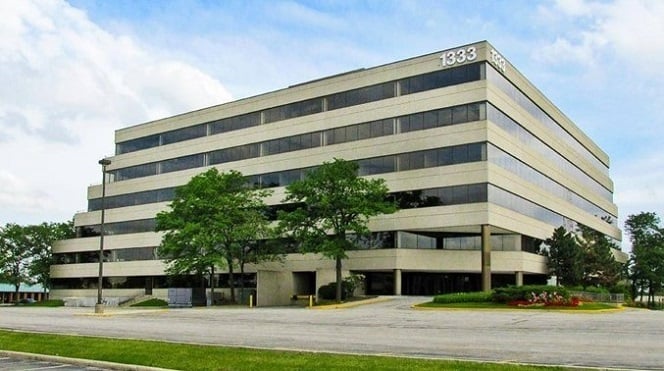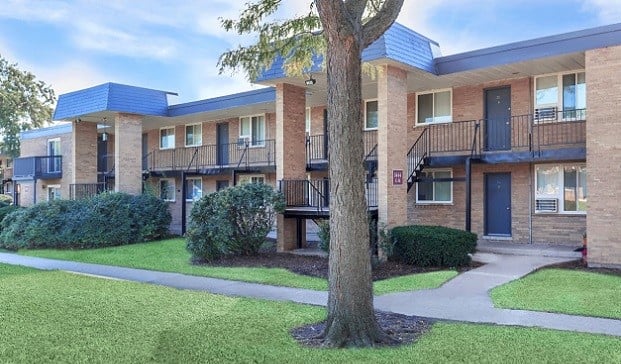The use of Polychlorinated biphenyls (PCBs) in building materials – particularly caulk - was widespread before 1977, and although the health risks associated with PCBs are well known, there is currently no legal requirement for commercial landowners or prospective purchasers to test for it. However, the catch 22 is that if PCBs are discovered at a property – through testing or because an employee or contractor finds it, for example – the containment and/or removal of these materials is required in accordance with EPA regulations. When purchasing an older commercial building, the purchaser has a decision to make during due diligence: to test or not to test for PCB (health concerns aside). So when should you test, and when is it reasonable to avoid the issue so as not to trigger mandatory and potentially costly cleanup in case contaminated materials are found?
The Use of PCBs in Building Products
PCBs have been widely studied, analyzed, regulated, and managed since the Toxic Substances Control Act (TSCA) was passed in 1977. Over the nearly four decades since 1977, PCBs have been found in a wide variety of building products, including sidewalk caulk, window glazing, expansion joints, crack sealants, caulks used as gaskets, surface coatings (e.g. paint), and caulks used between masonry blocks. Much of this material still remains in excellent condition, and largely as it was the day that it was installed. In fact, this remarkable durability is largely the reason PCB use was so widespread.
PCBs are a problem from both public health and landowner perspectives. The health risks of PCBs themselves are well known as the presence of PCBs in caulk and other building materials have been found to create significant human and ecological exposures. However, the risk of PCBs in the built environment has not been fully quantified, because the amount of affected material that is out there is entirely unknown.
Requirements for Testing PCBs
EPA has studied PCBs in caulk (including surface coatings), investigated PCB in school buildings, and developed regulations and guidelines for PCBs in building materials when discovered. However, EPA does not require commercial landowners, States, or municipalities to proactively test for the presence of PCBs-containing building materials. In some instances, municipalities, private lenders, and public lending agencies require testing for PCBs in building materials. However, there still remains no Federal requirement to do so.
For a commercial landowner or prospective purchaser “when discovered” presents a problem. Should PCBs in a building material such as caulk (>50 ppm PCBs) be discovered, the building material is not an approved use under TSCA, which means that it has to be removed as a PCB bulk product waste (40 CFR Part 761.62). Porous surfaces such as masonry that are contaminated may continue to remain in use for the useful life of the material as long as encapsulated. However, when ultimately removed, encapsulated masonry then becomes a PCB remediation waste (not a bulk product waste) that must be removed with EPA work plan approval under 40 CFR Part 761.61. Such a task is neither simple nor inexpensive, and can require a small army of environmental consultants, attorneys, and contractors to complete.
PCB-containing building materials could be anywhere in the United States. PCBs in building materials slowly dust and off-gas into the indoor environment, leach over time to adjacent masonry, other surfaces, and even to soil, sediment, and storm water. PCBs have also been found at significant concentrations in indoor air. If PCBs are found to have leached into soil, this soil is then to be regulated as a PCB remediation waste (40 CFR Part 761.61), and will require EPA work plan approval to remove.
However, since there is no legal obligation to test for PCBs in building materials (other than to provide a safe environment for building occupants), the purchaser or landowner may never have to identify, manage or dispose of PCB building materials and substrates such as masonry. As a result, if never discovered the presence of PCBs could result in no financial exposure at all.
But What If You Don't Test?
On the other hand, if PCBs are discovered after closing or during demolition/reconstruction, it could trigger the requirement to remove the affected building materials in the middle of the demolition or renovation project. Even worse, PCBs could be discovered after a renovation has been completed, necessitating remediation of a newly finished space. Such scenarios have far reaching implications, and discovering PCB “after the fact” can have dire consequences. The potential for an unexpected cost exposure can have a big impact on budgets, schedules, and asset values. The not insignificant cost of dealing with PCB in caulk or other materials can disrupt financing, and wreak all manner of havoc with respect to third party liability, insurance, building occupants, and regulatory compliance.
Even if not discovered during ownership, a new prospective purchaser may later test for PCBs during their due diligence, develop a remediation estimate, and demand a purchase price reduction from you to pay for the cost of its management and disposal. If the deal falls apart, the presence of PCB in building materials is then a known condition that needs to be disclosed to the next buyer, potentially devaluing the asset. In addition, a known condition may not be insurable.
A Self-Regulated Issue
At the present time, the EPA has not adopted an approach to require testing for PCBs in building materials such as caulk and paint. Even if a requirement to test emerged, the regulators don't have the resources or personnel to manage the large volume of work plans, reviews, and approvals necessary to manage the issue. Since TSCA is a Federal regulation, states and municipalities don't have the authority to make decisions for the EPA. Such a regulatory log jam on the Federal level is unthinkable.
The decision to test or not test for PCBs in caulk belongs to the purchaser during due diligence. The risk of testing includes incurring a significant expense now that may never otherwise come to fruition because it's possible that the PCBs are never identified. However, the risks of not testing include 1) buying a building with a hidden health hazard, and 2) buying a building with a hidden financial liability…often a big liability.
For the EPA, the issue of PCBs is the classic hot potato: the scope of the problem is unknown, may be vast, and there may not be a cost effective and logistical way to deal with what may or may not be a significant public health issue. But, PCBs are an emerging issue and should you chose to avoid it, the likelihood that PCBs will be discovered at some point by a contractor, employee, or other party is ever increasing. The decision to test or not to test will be influenced by a buyer's risk tolerance and intended property use.
© Touchpoint Markets, All Rights Reserved. Request academic re-use from www.copyright.com. All other uses, submit a request to [email protected]. For more inforrmation visit Asset & Logo Licensing.






